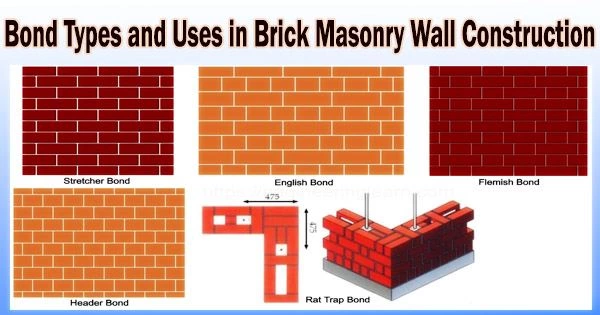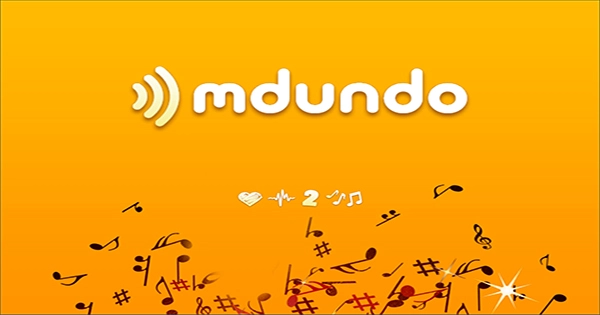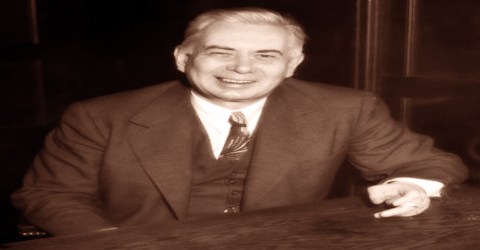When bricks are set next to each other or in layers in walls, the mortar fills the spaces between the layers, the grooves, and strengthens the ties between the bricks. Cement mortar is the most common material used for binding in brick masonry. Lime mortar and mud mortar are also used.
Types of Bonds in Brick Masonry Wall Construction:
The most commonly used types of bonds in brick masonry are:
- Stretcher bond
- Header bond
- English bond and
- Flemish bond
Other Types of bonds are:
- Facing bond
- Dutch bond
- English cross bond
- Brick on edge bond
- Raking bond
- Zigzag bond
- Garden wall bond
Stretcher bond
As depicted in the elevation of the picture below, the stretcher is the brick’s longer, narrower face. Bricks are put with only their stretchers visible, overlapping halfway with the courses of bricks below and above to form a stretcher bond, also known as a running bond. The simplest repeating pattern in brick is called a stretcher bond.
However, a stretcher bond’s drawback is that it can’t effectively bind with nearby bricks in full-width, thick brick walls. They are only appropriate for use in the building of partition walls that are half a brick thick. Stretcher-bonded walls are not sturdy enough to stand alone in cases of greater span and height. Thus they then need supporting structure such as brick masonry columns at regular intervals.
Stretcher bonds are frequently utilized as the exterior facing in steel or reinforced concrete framed structures. These are also employed as cavity wall outside facings. These walls are also frequently used as boundary walls and in gardens, among other places.
Header bond
Header is the shorter square face of the brick which measures 9cm × 9cm. Header bond is also known as heading bond. In header bonds, all bricks in each course are placed as headers on the faces of the walls.
While header bond is used to build walls with a full brick thickness of 18 cm, stretcher bond is used to build walls that are half the thickness of a brick. In header bonds, the overlap is kept equal to half width of the brick. To achieve this, three quarter brick bats are used in alternate courses as quoins.
English Bond
The English bond in brick masonry consists of two alternating courses of stretchers and headers, each with one course of stretcher and one course of header above it. Each alternate row is vertically aligned and the headers are placed in the middle of the stretchers in the course below. After the initial header, quoin closer is used at the beginning and end of a wall to break up the continuity of vertical joints. Bricks are divided lengthwise into two pieces and used as quoin closes at corners of brick walls.
Flemish Bond
Closers are placed in alternate courses next to the quoin header to break vertical joints in succeeding courses. In order to produce the bond in walls with a thickness equal to an odd number of half bricks, bats are primarily used. By arranging alternative headers and stretchers in a single course, a Flemish bond, often referred to as a Dutch bond, is produced.
The header of the following brick course is placed so that it is in the center of the stretcher of the course below, so that each course’s alternate headers are centered on the stretcher of the course below. Each alternative Flemish bond course begins with a header at the corner. Flemish bond must be at least one full brick thick.
The drawback of employing Flemish bond is that it is tough to create and takes more expertise to lay properly because all vertical mortar joints must be lined vertically for the best results. Closers are placed in alternate courses next to the quoin header to break vertical joints in succeeding courses. Bats are employed to create the bond in walls whose thickness equals an odd number of half bricks.
Although English bonds are stronger for the building of load-bearing walls, Flemish bonds offer a superior aesthetic look. Therefore, Flemish bond may be used for a better aesthetic view when pointing brick masonry walls. English bond is preferable if plastering needs to be done on the walls.
Flemish bonds are classified as:
- Single Flemish Bond
- Double Flemish Bond
Single Flemish bond is a combination of English bond and Flemish bond. In this kind of construction, each course of the wall has an exposed front surface made of Flemish bond and an interior rear surface made of English bond. The minimum thickness needed for a single Flemish bond is 1.5 bricks.
The major goal of employing a single Flemish bond is to give the front surface a more aesthetically pleasing appearance while maintaining the necessary strength in the brickwork with an English bond. Each course of the Double Flemish Bond comprises of an alternative header and stretcher, giving it the same appearance in both the front and rear elevations. This type of bonding is comparatively weaker than English bond.
















